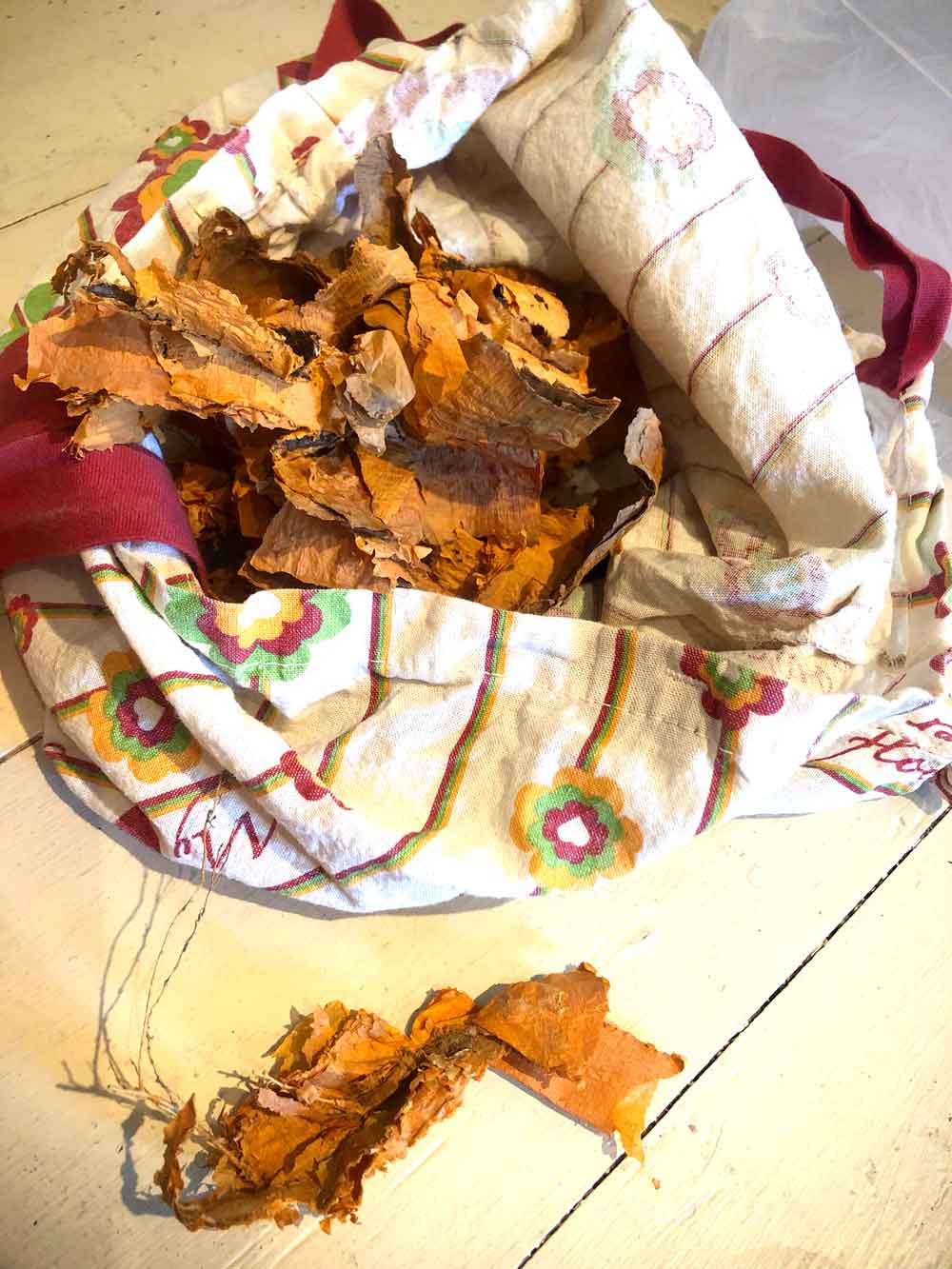Today I experimented with Osage root bark to see if it will make paint. Ordinarily, I avoid using plant pigments because they tend to be fugitive, meaning they fade or discolor with time. Some plant pigments, like the green I get from china berries, will completely disappear within a few days of sunlight exposure!
I have a yellow I made once from what I think were sassafras leaves. Now I’m not so sure I didn’t forget which leaves I’d gathered during my early experiments in 2018. It might have been something else. Anyway, not only did the yellow not fade, it actually intensifies when exposed to UV light. I’m curious if the root bark of this Osage will do the same thing.
Once I get the paint finished, I’ll make a post in my Color category over at my Paleo Paints website. I’ll link to it here when it’s done. In the meantime, here’s some pics and a little about what I’m doing. It’s all an experiment. I’ve never used the Osage root bark before, so it could work or it could be a waste of time. Well, not really a waste of time because even learning what does not work is often worth the effort.
Experimenting with Osage Root Bark
So far, my little test batch didn’t yield very much usable pigment, but I went forward with my experiment anyway to see how it comes out in the end. I got lots of color in the water, but the lake process didn’t seem to collect it. I’m not sure what to do about that, so I’ll have to try again later. I just hate wasting what little of the bark I have on failed experiments!


Waste of Time?
I don’t consider failed experiments to be a waste of time because at least I know now what *won’t* work. The problem is that I’m not sure why. Is it because I didn’t use enough Osage root bark to make a strong enough tea? Or is the color in the water not attaching to the alum or calcium carbonate enough? The water was still stained yellow after I’d finished, so maybe more chemicals were needed. Until I try again, with some different parameters, I just won’t know.
A Second Experiment
Before I began the lake process, I used some of the tea to mix directly with some raw gum Arabic. After the gum dissolved, I strained it and added enough honey to make it a yellow-stained media. So when I mull this lake pigment, I’ll use that yellowish media and maybe it’ll help add more yellow to it. Plus I’m making some cubes of the yellowish media by filling my molds with just that. Maybe after it evaporates down, it’ll be concentrated enough to show a sheer yellow on the paper.



